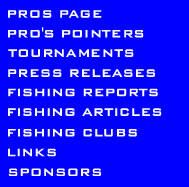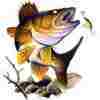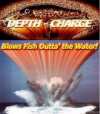Drift Jig When All Else Fails and Land a Limit of Walleye in No Time
There’s no doubting each Great Lake is a huge expanse of water, and it’s not easy to pinpoint where walleyes roam within them. This why the popular ploy is to cover as much water as possible while meticulously trolling crankbaits and crawler harnesses for these drifters.
There are times, however, when you can pin these migrants down and change from methodical trolling methods to ones employed more often by small-water anglers. Spring is one of those times; the reefs of the Wastern Basin of Lake Erie are one of those places; drifting while jigging—with hair jigs tipped with softbaits or bladebaits—is one of those tactics.
The outcome is often a limit of ‘eyes, especially when all else is failing due to high winds that have muddied the water. What do I consider too dirty for a trolling bite? My gage is when I look over the transom of my Lund and cannot see the prop on my 300-hp Mercury Pro Verado when it’s in the down position.
Yes, stained water is the perfect environment for jigging here.
Reason for the season
Like all fish, walleyes have only two things on their tiny brain their entire life cycle: Procreating and eating. Spawning is the very reason these fish congregate on the reefs during the spring season, and proliferation and feeding meld as one.
For the most part, the male walleyes hang out in spawning areas the longest of the genders; arriving well before the first female is ready to drop her eggs, and sticking around until after the last one’s spent. In general, when fishing for pre- and post-spawn walleyes, the majority of your catch will be the smaller, eater-size guys. On the reefs of Lake Erie, for example, where 3- to 4-pound males are the average, the entire month of April, and, depending on the severity of the weather, early May are the best times to find them congregated along the shallow rocky shoals.
Unlike the boys in the bunch, the big gals swim up onto rocks just long enough to release their eggs and then immediately turn tail and head back into the main lake’s abyss. If you’re there the moment a big hungry hen is, then chances are you may just land the largest walleye of your life.
On location
Whether I’m drift fishing the rocky reefs of Lake Erie, the gravel shorelines of the big lake near shore (or anywhere walleye spawn, for that matter), boat control is the key to catching success.
As I approach the reefs, I’ll watch my GPS—with a Navionics mapping program chart in its card reader. The Navionics program, when running in the background of the plotter screen, lets me know the exact position of each reef, so I can motor up wind of them while making sure not to motor over their tops and spooking fish. Ordinarily, I motor about 200 yards upwind of a reef I want to drift, which allows me plenty of time to deploy my devices for boat control and ready my rods.
On the bow of my fiberglass Lund 208 Pro-VG is a MotorGuide Tour Edition electric trolling motor, which I use whether it’s windy or not. (In calm water, I create a drift manually with the trolling motor.) In strong winds, in conjunction with my MotorGuide, I also use a large drift sock (aka: sea anchor). Both devices are vital for controlling drift direction and speed.
Generally, walleyes will position themselves on the upwind side of the reefs, where the currant’s rolling in. One thing I pay attention to before even venturing out, however, is the wind direction the day before I go fishing. Being such a large body of water, it often takes a day for water currants to change, thus the walleye may still be set up on the up-currant side, which was created by earlier winds. And it may take a couple drifts over a reef to figure out where, exactly, the walleye are. Once I do, I can change my boat location when I motor up-wind so as to drift over the fish no matter what side they’re on.
By far, the best speed for drift jigging here is 1.1 MPH or slower. Any faster and I just don’t get the same amount of strikes. I can adjust my speed by using both the drift sock and electric trolling motor simultaneously. Anchoring is an option once fish are located, but keeping on the move with a controlled drift will catch more fish.
Well equipped
Drift jigging itself, as well the rod, reels, line and lures are simplistic, to say the least.
My preferred rod is a 6- to 6 1/2-foot fast-action medium-light-action spinning rod, such as a Fenwick Elite Tech Walleye model, perfectly balance with an ABU Garcia Sorön STX 10 pinning reel. And I prefer line with no stretch to it as it’s the most sensitive. Six-pound-test Berkley FireLine has the same diameter as 2-pound-test monofilament, so it cuts through the water well and the jigs falls flawlessly.
I use the Flame (bright green) colored FireLine as I can often see the line twitch when a walleye whacks it well before I feel it. When using a hair jig, I’ll tie the lure directly to the FireLine with a Palomar knot. When fishing bladebaits (my favorite a Reef Runner Cicada) I’ll tie on 15-inches of stiff 12-pound-test monofilament, such as Berkley TX, which lessons the chance of the bladebait spinning in the air during the cast and tangling up in the FireLine. And I always use a Berkley ball-bearing swivel to attach the XT to the FireLine, and a Berkley Cross-Lok snap to connect the Cicada to the Monofilament.
Lured by another
As for the jigs themselves, the best hair jigs I’ve found are tied by small mom-and-pop companies, which can be found at tackle shops around Erie’s Southern shoreline, such as Happy Hooker Bait and Tackle, Oak Harbor, Ohio (419/898-9676, happyhookerbaitandtackle.com). I like 3/8-, 1/2-, and 5/8-ouncers, using the lightest I can depending on the wind conditions at hand.
To bulk up the jig and add scent, I tip the jig with Berkley’s 4-inch Gulp! Alive! Minnow in smelt or emerald shiner. I hook the Gulp! Minnow through the head, just as if I was using a live minnow, and stick the stinger in the back, making sure the Gulp! Minnow stays strait.
For the most part, facing into the wind and fishing upwind, I employ a gentle lift-and-drop motion to the jig, making sure to lift the rod tip the second I feel the lead head “tick” the bottom. Strikes are often quick and light and I set the hook with a firm sweeping motion of the rod.
Cicada’s, on the other hand, require a more aggressive upward motion, but just enough that I feel the bladebait vibrate. And I like the lure to drop with a slower, pendulum motion rather than a strait down fall, which can cause the lure to foul on the line.
More than likely, the fish will be right on the steep drops on the edge of the reefs, rather than right on top. And I pay special attention to the points and curves of the reef as these are areas fish often hold.
Over all
Drift jigging the reefs of Lake Erie, or any of the Great Lakes for that matter, when the fish are congregated for spawning can mean a limit of ‘eyes in no time; especially when all else is failing. Watch your speed, keep control of the boat at all times, bounce a hairy jig or rip a bladebait at bottom, and set the hook at the slightest hit the outcome will be one to remember.
Mark Brumbaugh (markbrumbaugh.com) is a walleye tournament pro with AIM (aimfishing.com), and a Great Lakes captain, who live in Central Ohio.







